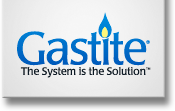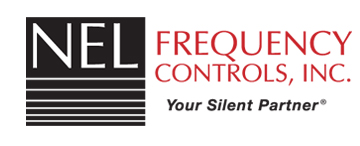Bioplastic Packaging Material Market Status and Trend Analysis 2017-2026
- Report Code : 99S2204719
- Published On: Dec, 2020
- Category : Chemicals & Materials
- Pages : 101
-
Further key aspects of the report indicate that:
Chapter 1: Research Scope: Product Definition, Type, End-Use & Methodology
Chapter 2: Global Industry
Chapter 3: Market Dynamics
Chapter 4: Global Market Segmentation by region, type and End-Use
Chapter 5: North America Market Segmentation by region, type and End-Use
Chapter 6: Europe Market Segmentation by region, type and End-Use
Chapter 7: Asia-Pacific Market Segmentation by region, type and End-Use
Chapter 8: South America Market Segmentation by region, type and End-Use
Chapter 9: Middle East and Africa Market Segmentation by region, type and End-Use.
Chapter 10: Market Competition by Companies
Chapter 11: Market forecast and environment forecast.
Chapter 12: Industry .
The global Bioplastic Packaging Material market has the potential to grow with xx million USD with growing CAGR in the forecast period from 2021f to 2026f.
Based on the type of product, the global Bioplastic Packaging Material market segmented into
Bio-PET
PLA & PLA Blends
Starch Blends
Bio-PE
Others
Based on the end-use, the global Bioplastic Packaging Material market classified into
Flexible Packaging
Rigid Packaging
Based on geography, the global Bioplastic Packaging Material market segmented into
North America [U.S., Canada, Mexico]
Europe [Germany, UK, France, Italy, Rest of Europe]
Asia-Pacific [China, India, Japan, South Korea, Southeast Asia, Australia, Rest of Asia Pacific]
South America [Brazil, Argentina, Rest of Latin America]
Middle East & Africa [GCC, North Africa, South Africa, Rest of Middle East and Africa]
And the major players included in the report are
Arkema
BASF
Braskem
NatureWorks
Heritage Pioneer Corporate Group
Novamont
Metabolix
Reverdia
Solvay
Bioamber
Corbion
Genomatica
Toray
Novozymes
Versalis
Lanzatech
-
With tables and figures helping analyze worldwide Bioplastic Packaging Material market, this research provides key statistics on the state of the industry and is a valuable source of guidance and direction for companies and individuals interested in the market.
1 RESEARCH SCOPE1.1 Research Product Definition
1.2 Research Segmentation
1.2.1 Product Type
1.2.2 Main product Type of Major Players1.3 Demand Overview
1.4 Research Methodology
2 GLOBAL BIOPLASTIC PACKAGING MATERIAL INDUSTRY2.1 Summary about Bioplastic Packaging Material Industry
2.2 Bioplastic Packaging Material Market Trends
2.2.1 Bioplastic Packaging Material Production & Consumption Trends
2.2.2 Bioplastic Packaging Material Demand Structure Trends2.3 Bioplastic Packaging Material Cost & Price
3 MARKET DYNAMICS3.1 Manufacturing & Purchasing Behavior in 2020
3.2 Market Development under the Impact of COVID-19
3.2.1 Drivers
3.2.2 Restraints
3.2.3 Opportunity
3.2.4 Risk
4 GLOBAL MARKET SEGMENTATION4.1 Region Segmentation (2017 to 2021f)
4.1.1 North America (U.S., Canada and Mexico)
4.1.2 Europe (Germany, UK, France, Italy, Rest of Europe)
4.1.3 Asia-Pacific (China, India, Japan, South Korea, Southeast Asia, Australia, Rest of Asia Pacific)
4.1.4 South America (Brazil,, Argentina, Rest of Latin America)
4.1.5 Middle East and Africa (GCC, North Africa, South Africa, Rest of Middle East and Africa)4.2 Product Type Segmentation (2017 to 2021f)
4.2.1 Bio-PET
4.2.2 PLA & PLA Blends
4.2.3 Starch Blends
4.2.4 Bio-PE
4.2.5 Others4.3 Consumption Segmentation (2017 to 2021f)
4.3.1 Flexible Packaging
4.3.2 Rigid Packaging
5 NORTH AMERICA MARKET SEGMENT5.1 Region Segmentation (2017 to 2021f)
5.1.1 U.S.
5.1.2 Canada
5.1.3 Mexico5.2 Product Type Segmentation (2017 to 2021f)
5.2.1 Bio-PET
5.2.2 PLA & PLA Blends
5.2.3 Starch Blends
5.2.4 Bio-PE
5.2.5 Others5.3 Consumption Segmentation (2017 to 2021f)
5.3.1 Flexible Packaging
5.3.2 Rigid Packaging5.4 Impact of COVID-19 in North America
6 EUROPE MARKET SEGMENTATION6.1 Region Segmentation (2017 to 2021f)
6.1.1 Germany
6.1.2 UK
6.1.3 France
6.1.4 Italy
6.1.5 Rest of Europe6.2 Product Type Segmentation (2017 to 2021f)
6.2.1 Bio-PET
6.2.2 PLA & PLA Blends
6.2.3 Starch Blends
6.2.4 Bio-PE
6.2.5 Others6.3 Consumption Segmentation (2017 to 2021f)
6.3.1 Flexible Packaging
6.3.2 Rigid Packaging6.4 Impact of COVID-19 in Europe
7 ASIA-PACIFIC MARKET SEGMENTATION7.1 Region Segmentation (2017 to 2021f)
7.1.1 China
7.1.2 India
7.1.3 Japan
7.1.4 South Korea
7.1.5 Southeast Asia
7.1.6 Australia
7.1.7 Rest of Asia Pacific7.2 Product Type Segmentation (2017 to 2021f)
7.2.1 Bio-PET
7.2.2 PLA & PLA Blends
7.2.3 Starch Blends
7.2.4 Bio-PE
7.2.5 Others7.3 Consumption Segmentation (2017 to 2021f)
7.3.1 Flexible Packaging
7.3.2 Rigid Packaging7.4 Impact of COVID-19 in Europe
8 SOUTH AMERICA MARKET SEGMENTATION8.1 Region Segmentation (2017 to 2021f)
8.1.1 Brazil
8.1.2 Argentina
8.1.3 Rest of Latin America8.2 Product Type Segmentation (2017 to 2021f)
8.2.1 Bio-PET
8.2.2 PLA & PLA Blends
8.2.3 Starch Blends
8.2.4 Bio-PE
8.2.5 Others8.3 Consumption Segmentation (2017 to 2021f)
8.3.1 Flexible Packaging
8.3.2 Rigid Packaging8.4 Impact of COVID-19 in Europe
9 MIDDLE EAST AND AFRICA MARKET SEGMENTATION9.1 Region Segmentation (2017 to 2021f)
9.1.1 GCC
9.1.2 North Africa
9.1.3 South Africa
9.1.4 Rest of Middle East and Africa9.2 Product Type Segmentation (2017 to 2021f)
9.2.1 Bio-PET
9.2.2 PLA & PLA Blends
9.2.3 Starch Blends
9.2.4 Bio-PE
9.2.5 Others9.3 Consumption Segmentation (2017 to 2021f)
9.3.1 Flexible Packaging
9.3.2 Rigid Packaging9.4 Impact of COVID-19 in Europe
10 COMPETITION OF MAJOR PLAYERS10.1 Brief Introduction of Major Players
10.1.1 Arkema
10.1.2 BASF
10.1.3 Braskem
10.1.4 NatureWorks
10.1.5 Heritage Pioneer Corporate Group
10.1.6 Novamont
10.1.7 Metabolix
10.1.8 Reverdia
10.1.9 Solvay
10.1.10 Bioamber
10.1.11 Corbion
10.1.12 Genomatica
10.1.13 Toray
10.1.14 Novozymes
10.1.15 Versalis
10.1.16 Lanzatech10.2 Bioplastic Packaging Material Sales Date of Major Players (2017-2020e)
10.2.1 Arkema
10.2.2 BASF
10.2.3 Braskem
10.2.4 NatureWorks
10.2.5 Heritage Pioneer Corporate Group
10.2.6 Novamont
10.2.7 Metabolix
10.2.8 Reverdia
10.2.9 Solvay
10.2.10 Bioamber
10.2.11 Corbion
10.2.12 Genomatica
10.2.13 Toray
10.2.14 Novozymes
10.2.15 Versalis
10.2.16 Lanzatech10.3 Market Distribution of Major Players
10.4 Global Competition Segmentation
11 MARKET FORECAST11.1 Forecast by Region
11.2 Forecast by Demand
11.3 Environment Forecast
11.3.1 Impact of COVID-19
11.3.2 Geopolitics Overview
11.3.3 Economic Overview of Major Countries
12 REPORT SUMMARY STATEMENT
-
The Bioplastic Packaging Material Market has been segregated into various crucial divisions including applications, types, and regions. Each market segment is intensively studied in the report contemplating its market acceptance, worthiness, demand, and growth prospects. The segmentation analysis will help the client to customize their marketing approach to have a better command of each segment and to identify the most prospective customer base.
Report Objectives / Segmentation Covered :
By Companies / players:
By Regions:
By Type:
By Application:
Frequently asked questions(FAQ's):
A large number of Global Bioplastic Packaging Material players are focusing on individualized and innovative technologies that will provide the necessary impetus for profit and growth in the coming years.
From 2025 to 2030, the Bioplastic Packaging Material Market is expected to grow at a compound annual growth rate of YY%, reaching a value of USD XXX Million.
The influx of capital into the Bioplastic Packaging Material Market, as well as the deployment of technologies designed to increase efficiency and yield high volume, are paving the way for promising market opportunities.
In this highly competitive and rapidly evolving Bioplastic Packaging Material Industry, top strategic priorities such as innovation, diversification, and M&A would remain consistent.















